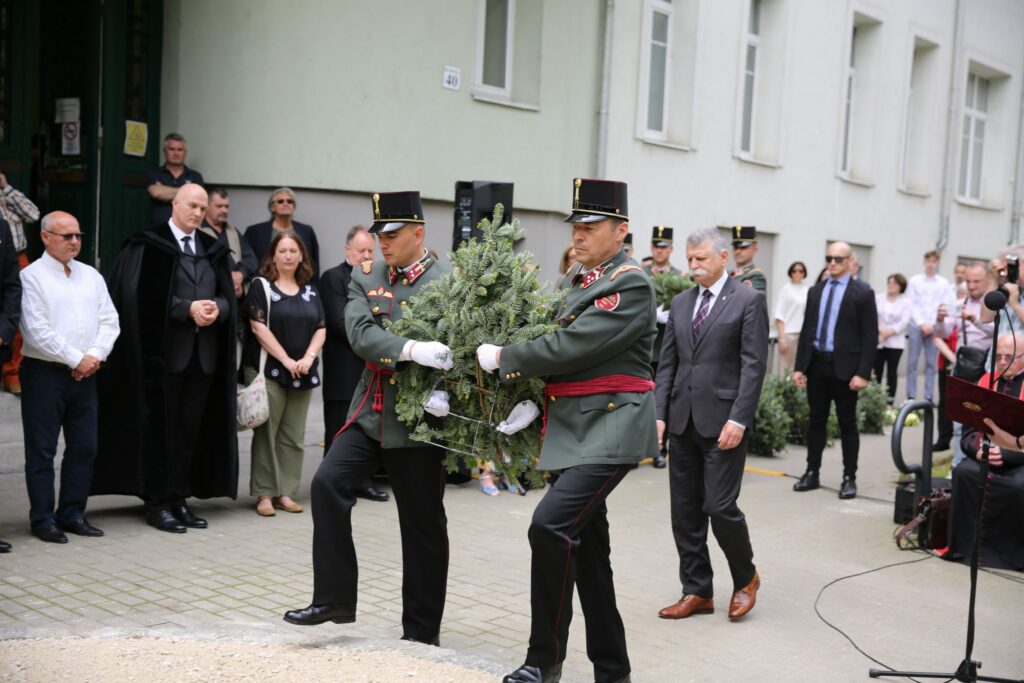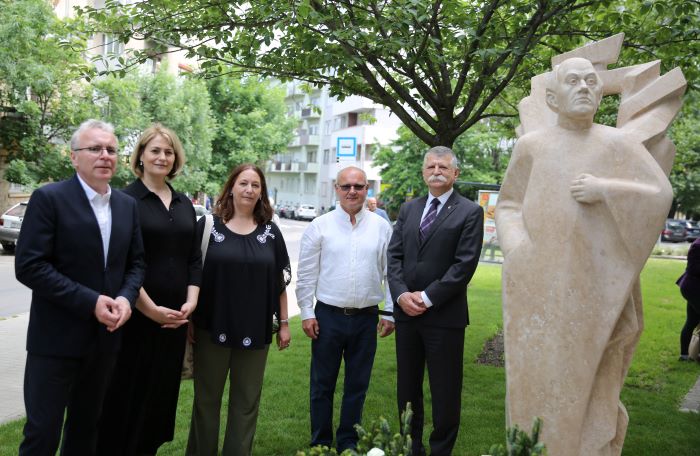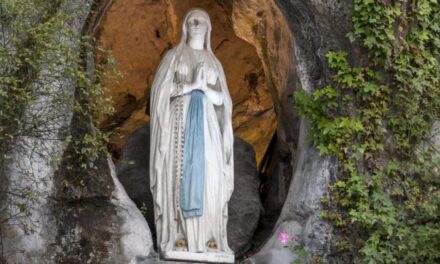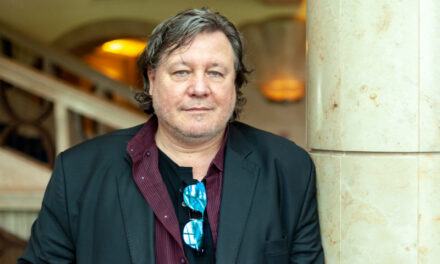As a worthy crowning of the Áron Tamási Memorial Year, the first full-length statue of the writer in Budapest, created by Transcarpathian artist Péter Matl, was inaugurated. The festive event was timed on the anniversary of the death of Áron Tamási by the State Secretariat for National Policy of the Prime Minister's Office, the House of Magyarság and Budapest Capital XII. district Hegyvidék Self-Government. The statue was given a worthy place in front of an educational institution: the building of the ELTE Teacher Training and Kindergarten Faculty, to also convey a message to the educators of future generations.
The choice of the scene was also influenced by the fact that during the siege of Budapest, Áron Tamási "stumbling among ruins, avoiding the living and the dead" - found refuge here in the district, Bajor Gizi , and even after the war he was given an apartment in the nearby Alkotás Street from the capital, where he lived until his death on May 26, 1966 - recalled Zoltán Pokorni , XII. district mayor of Hegyvidék the environment of the writer's years in Hungary.
He reminded us that Trianon, our national tragedy, is most often identified with Tamási, the greatest Transylvanian and Székely writer.
in 2010, he and László Kövér suggested
The statue is in the right place, it warns future teachers that Áron Tamási should not only be a novelist for them, but also an understanding of what it means to be Hungarian beyond the border. And maybe they also understand what it means within a limit."We are in the world in order to be at home somewhere in it," Kinga Erős, president of the Hungarian Writers' Association, began his speech with the most quoted Tamás phrase. Yet it has not become commonplace, because its truth makes it true forever. Finding and preserving home has never been as important as it is today, the statue says, and also that we find our spiritual home in it. Áron Tamási found him: according to his last will, he wanted to be laid to rest in Farkaslaka, in his native village, on his monument - created by Jenő Szervátiusz and Tibor Szervátiusz - the epitaph he drew up reads: "He was Székely by birth, son of Hunnia / Loyal servant of his fallen squadron."

László Kövér wearing a wreath (Photo: Péter Matúz/Háza Magyarság)
, László Kövér , called Áron Tamási a Székely táltos, who with his writings protected his people, his homeland and healed the life force with Székely serenity in an age when the truth of the Székelys and Hungarians could not be spoken, but neither could it be silenced, because "Above Énlaka, on the back of the Firtos horse , Providence fell asleep with his head down .
The Speaker of the House brought to life the three great trials of Áron Tamási's life, which he had to face with a wolf's eye:
In 1918, during the First World War, he was faced with death on the Italian front, in 1937 with Romanian fascism, which threatened ethnic exclusion, and in 1956 with the traitorous Hungarian communists.
"In all three cases, as a human being, a Hungarian and a literate person, he emerged victorious from the confrontation morally. His artistic truths have become eternal truths because their gold lining lies in reality, in national loyalty and scribe responsibility, in character," emphasized László Kövér.
/……../
The work of sculptor Péter Matl was unveiled by László Kövér, Zoltán Pokorni, Kinga Erős and Krisztina Csibi
The statue was blessed by the papal chaplain Jakab Gábor Lutheran bishop Dezső Adorjáni Zsuzsanna Ráduly-Baka from Kovászna, and Czire Szabolcs ///
After the joint recitation of the Lord's Prayer, the blessing sounded like this: may the statue remind us of the cultural unity of Transylvania and the motherland.
The ceremony ended with the placing of a wreath on the statue and the joint singing of the Székely National Anthem, after which the actors and guests, including the delegation from Farkaslaka, mingled, talked, got to know the sculptor Péter Matl and his creations, photos were taken, the little girls in Székely clothes brought freshly baked horn cakes from their baskets, and the boys offered brandy they brought from home.
Speaking with Áron Tamási: we were at home in the world.
Author: Judit Ccervenka/felvidék.ma)
Cover photo: Zoltán Pokorni, Krisztina Csibi, Kinga Erős, Péter Matl and László Kövér at the statue. Photo: Péter Matúz/House of Hungary )













